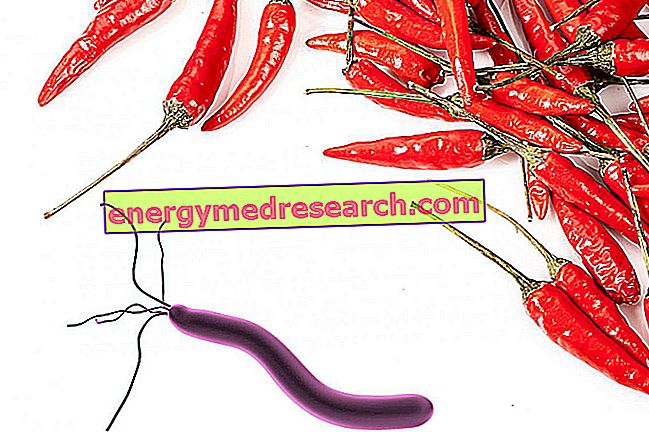What are the differences between these two foods? Better meat or fish?
Meat is often considered a better food than fish as it is richer in nutrients. In reality the latter has a high nutritional value, inferior to meat in some aspects but definitely superior to others.

However, the lipid quality of the fish is clearly superior and this food stands out for:
- a reduced cholesterol content (with the exception of crustaceans);
- abundance of unsaturated and polyunsaturated fatty acids, the so-called "good fats", useful in the prevention of cardiovascular diseases.
When preparing fish, however, special attention must be paid to cooking, as polyunsaturated fats deteriorate easily at high temperatures; an excellent method for preparing fish is the so-called "cartoccio". This culinary technique involves cooking the fish in an oven only after having wrapped it in aluminum foil. In this way the flavor, aroma and softness of the fish is also preserved.
Frying is not recommended because the famous omega 3 fats, when subjected to high temperatures, become unstable producing harmful residues for our body (see: Ideal oils for frying, which are the best oils to use for our fries?).
The concentration of lipids in fish is very variable (from 0.1 to 30%) and for this reason the fish are classified as lean, semi-fat and fat.
FISH LISTED ON THE BASIS OF FAT CONTENT | |||
skinnyUP TO 0.1%) | THIN(FROM 1 TO 5%) | semigrassi(FROM 5 TO 10%) | FATS(OVER 10%) |
| Pike | Sea bass | Mullet | Mackerel |
| Grouper | Sole | Mullet | Salmon |
| Norway lobster | Tench | Carp | Eel |
| Gambero | Cod | Sardine | Capito |
| Sea bream | Anchovy | Mullet | Herring |
| Trout | Tuna | ||
| Swordfish | |||
| Clam |
Lean fish thanks to their low purine and pyrimidine content are particularly suitable for urinemics.
Among the fish, the breed is the least protein food, the leanest cod, the most protein-rich tuna, the most fatty salmon and eel, the herring the one with the highest creatine content.
Crustaceans and molluscs, although they contain moderate amounts of cholesterol, are practically free of saturated fats and rich in unsaturated fats. In any case, their lipid content is modest (1-3%).
Mussels and oysters are also rich in iron and vitamin C. The discrete presence of carbohydrates (6-10%) is responsible for their characteristic sweetish taste.
Fish proteins, although inferior to meat, are less rich in connective tissue.
For this reason the meat of the fish is more digestible.
It has been calculated that it takes about 2-3 hours for the digestion of very thin fish, 3 or 4 for the digestion of semi-fat and fat weights; in general freshwater fish are more digestible while molluscs are often difficult to digest.
The reduced content of connective tissue on the one hand makes the fish particularly digestible, on the other hand it causes the disintegration and disintegration of the muscle fibers after prolonged cooking.
Among the amino acids in fish there is an abundant presence of lysine, a limiting amino acid of cereals and some vegetables. So go ahead with the combination of cereals and fish, vegetables and fish, the one between fish and other protein sources (legumes, meat, cheese or eggs) is not recommended.
The meat is richer in iron and B vitamins. However, fish is richer in some mineral salts such as iodine, zinc, calcium, selenium and fluorine. The amount of phosphorus, whatever may be said, is practically equivalent.
In addition to their fat content, the fish are also classified according to their origin (sea and fresh water).
From the nutritional point of view the best fish is the blue one, so called by the color of the back. This fish, which lives in the Mediterranean waters, is generally more tasty and rich in polyunsaturated fatty acids.
It is also possible to distinguish between catch fish and farmed fish. From the nutritional point of view there are no particular differences and in some cases the farmed fish is superior for hygiene and genuineness. Everything, obviously, depends on the fish farming methods adopted.
Wild fish is potentially more exposed to chemical waste and heavy metals. The fish most sensitive to pollution are those able to filter large quantities of water and consequently retain pathogenic microorganisms.
Large fish (tuna, mackerel and swordfish) are more sensitive to toxic metals such as mercury, copper, lead and cadmium. Hake, trout and cod tend to accumulate less metals, as does salmon. In general, fish caught in the Atlantic Ocean is less polluted than that from the Mediterranean Sea.
In any case, the most important requirement to avoid unwanted food poisoning is the freshness of the fish. In fact, while the meat is preserved with relative ease, fresh fish undergoes rapid deterioration.
Remembering that frozen fish has nothing to envy to fresh fish, let's examine some features to consider when buying it:
| FEATURE | FRESH FISH | FRESH FISH | ALTERED FISH |
| SMELL | salt or seaweed | fresh | ammonia |
| RIGOR MORTIS | here I'm | absent | absent |
| APPEARANCE | shiny and shiny surface | living surface | dull and ashen |
| CONSISTENCY | firm and fleshy | elastic and soft | soft and flaccid |
| EYE | alive and protruding | vitreous | flat and tarnished |
| COLOR BRANCHIE | burgundy red and shiny | pale red and purple | fleshy brown |
When buying frozen fish, pay attention to the following details:
- Expiration date
- packaging integrity
SEASONALITY OF FISH
Deepening: Fresh Seasonal Fish
- Spring: lobster, carp, mullet, snapper, dairy, flounder, swordfish, tuna, sardine, mackerel
- Summer : anchovy, squid, mussel, sea bream, oyster, turbot, redfish, cuttlefish, squid, clam
- Autumn: eel, lobster, mullet, oyster, octopus, sardine, sole, tellina
- Winter : cod, octopus, sardine, monkfish, sardine, sole, sea bass, trout, mullet
Fish is one of the most complete foods as it is rich in proteins and mineral salts such as phosphorus, calcium, iodine and iron. Thanks to all these nutritional principles it should become one of the main foods of our diet.



